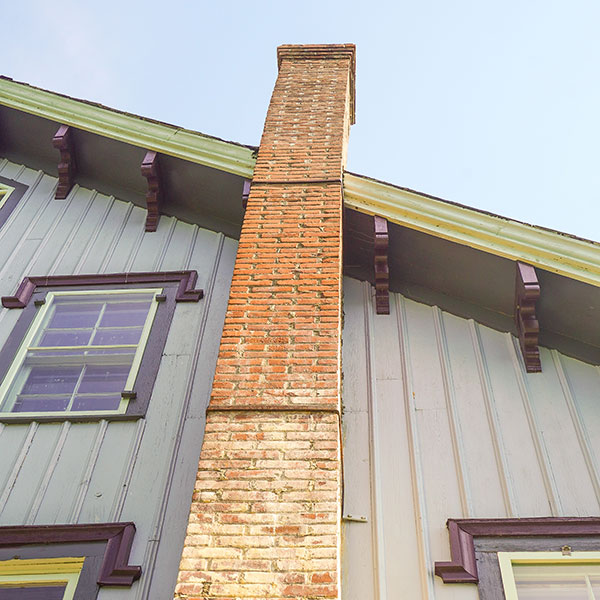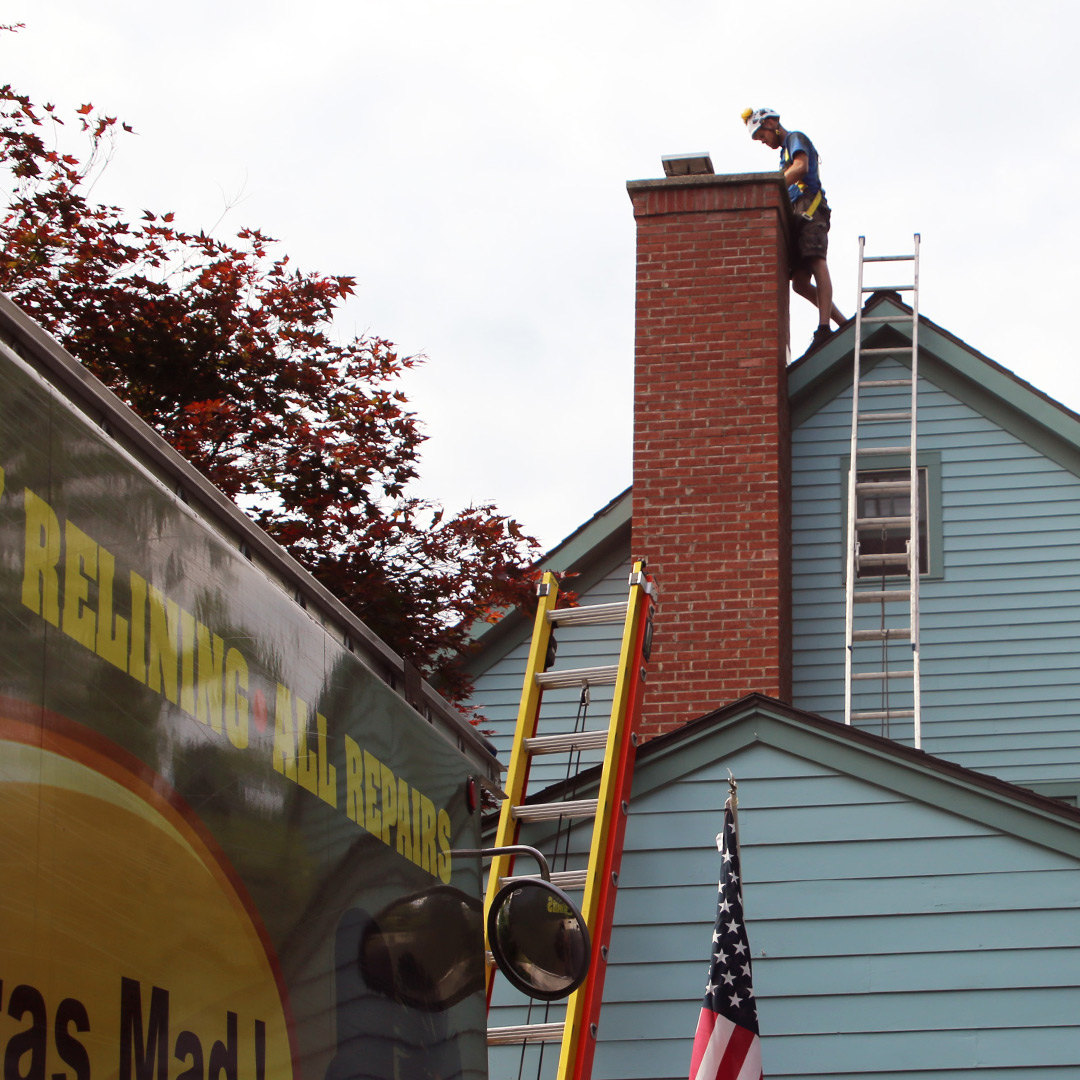Why Is My Chimney Separating from My House?
It can be quite alarming to notice that your chimney is slowly moving away from the outside wall of your home. Fortunately, this isn’t an uncommon occurrence, and skilled chimney crews know how to resolve the problem.
Hudson Valley Chimney of Poughkeepsie, NY, would like to share a little about why chimneys pull away from homes and what can be done about it.
 Chimney stabilizers
Chimney stabilizers
The concrete chimney footing is the primary stabilizer of a masonry chimney. For chimneys that sit within a part of the home, the framed opening in the attic also acts as a stabilizer. Problems with either the footing or the framed opening can lead to a leaning chimney.
Another possible cause of a chimney that’s pulling away from the home is structural damage to the masonry.
How to tell if your chimney is separating from your house
Typically, you’ll be able to see a gap or gaps between the chimney structure and the exterior house wall. There should be no gap at all, so if you see any degree of separation, have the chimney inspected right away.
Also, look for filler material, such as foam insulation, mortar or caulk, between the chimney and the wall. This indicates that a previous owner of the home attempted to solve a separation issue. However, fillers only mask the larger problem.
Dislodged flashing, which covers the gap where the chimney extends through the roof, is another sign that your chimney may be moving.
Chimney footing issues
Most chimney separations happen because of issues with the chimney footing, which is the solid slab on which the chimney is built. The purpose of the concrete footing is to hold the chimney securely.
A properly built footing will be at least one foot thick and will extend at least six inches beyond the chimney on all four sides. A smaller footing may not be able to withstand the tons of weight it has to support.
When installing the footing, the builders should have ensured a proper soil base below it. But even with a good base, soil can expand and contract during freeze-thaw cycles and cause the footing to fail.
Particularly in cold-weather climates (such as New York), chimney footings need rebar reinforcements to help secure the structure should it crack from the frigid temperatures. After a major crack, the footing will still need to be repaired, but a proper reinforcement can prevent a major catastrophe.
Finally, footings built with inferior cement or shoddy workmanship will fail early and leave you with a leaning or dislodged chimney.
 Solving the separation problem
Solving the separation problem
The first step is a thorough inspection by a licensed, certified chimney inspector. This will tell you exactly what’s happening, why it’s happening and what to do about it. Many inspectors are also trained to perform structural chimney repairs. If your inspector is not, connect with a local chimney services company that has experience in refitting and repairing leaning chimneys.
Since 1976, Hudson Valley Chimney has offered certified chimney inspections and complete chimney repair and rebuilding services by trained technicians. We’ll find out what’s causing your chimney to pull away from your home, and we’ll solve the problem the right way.
Call us at (845) 471-1071 or get in touch with our simple contact form.





